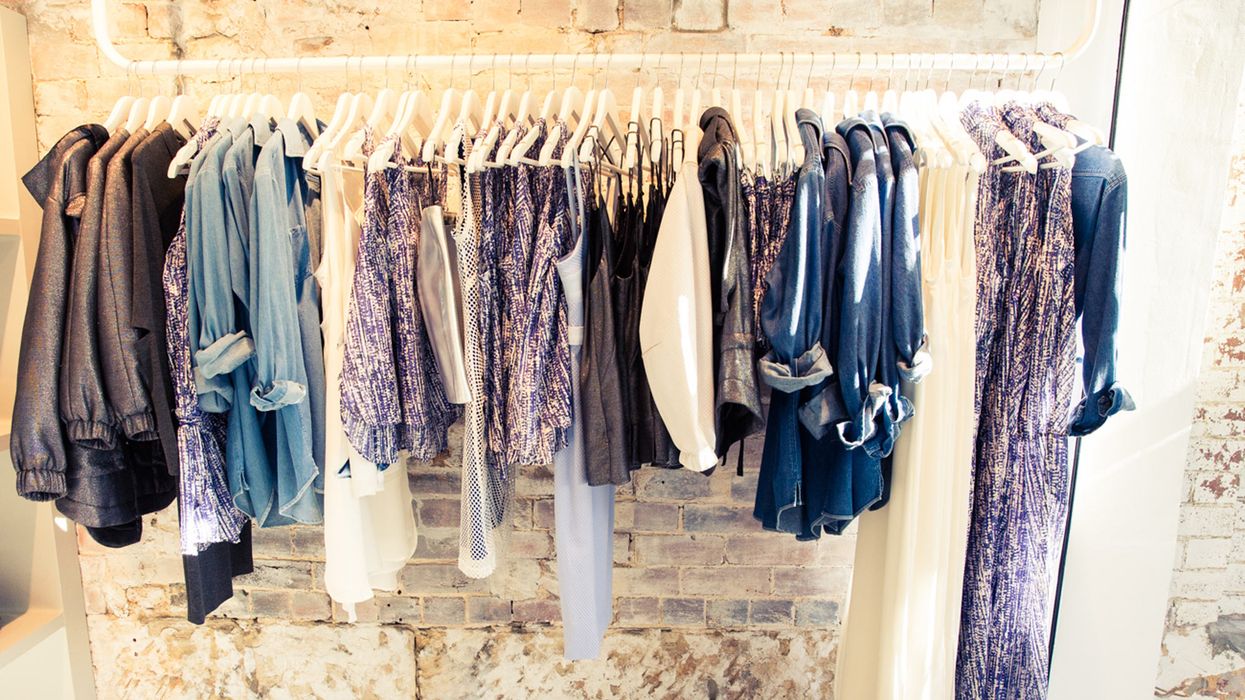A Newbie's Overview to Navigating the Boutique Fashion Scene
A Newbie's Overview to Navigating the Boutique Fashion Scene
Blog Article
Checking Out the Evolution and Impact of Clothes on Modern Style Trends
The advancement of apparel has actually significantly affected modern-day style patterns, combining historical precedents with cutting-edge advancements. Renowned numbers like Coco Chanel and Yves Saint Laurent transformed the style market by presenting principles that focus on convenience and availability, which proceed to reverberate today.
Historic Style Influencers
In the tapestry of style history, specific figures have left an enduring mark, forming the patterns and designs that define entire ages. Coco Chanel, a revolutionary developer, redefined ladies's style by introducing comfy, stylish garments that left from restrictive corsets. Her famous Chanel match and little black gown have come to be ageless staples in closets worldwide. Christian Dior's post-war "New Look" in 1947, with its celebration of femininity with complete skirts and cinched waistlines, marked a return to luxury and has actually continued to affect developers.
Elsa Schiaparelli is an additional pivotal figure, renowned for her avant-garde layouts that integrated surrealist art, teaming up with Salvador Dalí to produce whimsical items that challenged standard aesthetics. Her ingenious use of shade and bold patterns resounds in modern fashion. Yves Saint Laurent, at the same time, equalized haute couture with prêt-à-porter collections, bringing runway designs to the masses and establishing a precedent for contemporary ready-to-wear lines.
These visionaries, to name a few, not only transformed fashion in their times yet additionally set enduring patterns that resonate in today's garment industry, giving a structure upon which contemporary designers remain to innovate and develop. Their legacies highlight the importance of imagination and bold in style's ever-evolving story.
Technical Innovations in Fashion
Amidst the vibrant landscape of the garment industry, technical innovations stand at the forefront of development, reshaping exactly how designers create and consumers involve with style. The assimilation of 3D printing has actually transformed layout processes, enabling designers to experiment with intricate frameworks and sustainable products that were formerly inconceivable. This modern technology promotes rapid prototyping, decreasing waste and quickening manufacturing times.

Smart fabrics, embedding modern technology into textiles, are also transforming the industry. Advancements like temperature-regulating and self-cleaning fabrics offer boosted capability and convenience. Wearable innovation, incorporating features like fitness tracking and communication, adds a new dimension to style, merging aesthetics with functionality.
Cultural Shifts and Style
As technical advancements remain to reshape the fashion business, cultural shifts are just as significant, redefining design and consumer preferences. Recently, the rise of social media sites systems has actually accelerated the circulation of global style trends, enabling diverse social impacts to merge and coexist. This electronic interconnectivity has facilitated the rapid exchange of concepts, causing a much more inclusive and diverse analysis of style that reflects the complex nature of contemporary culture.
Cultural understanding and appreciation have triggered developers to draw motivation from a broader spectrum of ethnic and historical contexts, integrating standard motifs with contemporary visual appeals. This blend has resulted in style that resonates with a broader audience, promoting a feeling of identification and belonging across different demographics. In addition, the increasing demand for personalization has actually driven brand names to provide customizable alternatives, allowing customers to share individuality while showing their social heritage.
Furthermore, moving societal worths have affected style, with inclusivity and variety ending up being main themes. The market has begun to welcome versions and influencers of different body kinds, ethnicities, and gender identities, challenging traditional elegance criteria. This change emphasizes the power of cultural changes fit the future of fashion, as design ends up being a much more authentic expression of personal and collective identity.
Sustainability and Modern Layout
While the style industry continues to develop, the crucial for sustainability has actually ended up being significantly immediate, influencing modern design techniques. The surge of sluggish style, which emphasizes quality over quantity, motivates customers to spend in classic items instead than short-term fads.
Additionally, modern design is identified by its advancement in decreasing waste and promoting circularity. This approach not just minimizes ecological impact however additionally boosts the social obligation of fashion houses.

Future Trends in Fashion

Sustainability will certainly proceed to be a driving force in shaping future fashion patterns. The industry is increasingly embracing environment-friendly products and moral manufacturing approaches, reacting to an expanding consumer need for responsible techniques. Advancements such as bio-fabricated materials and closed-loop recycling systems are readied to redefine how clothes is created and consumed, reducing ecological impact while keeping style and top quality.
Cultural changes, consisting of the rise of inclusivity and variety, will likewise play a critical duty. As society comes to be much more knowledgeable about social issues, fashion is anticipated to become a platform for expression and adjustment. Designers will likely concentrate on developing collections that reflect a more comprehensive series of identities and experiences, championing representation and access.
Conclusion
The development of apparel substantially influences contemporary fashion patterns, where historic influences merge with contemporary styles. Trick numbers like Coco Chanel and Yves Saint Laurent have redefined style, while technological technologies such as 3D printing and smart textiles expand innovative opportunities. Social shifts towards inclusivity and sustainability force brand names to accept and embrace moral techniques variety. This ongoing evolution highlights style's duty as a mirror to social worths and technical advancement, suggesting a future rich with development and inclusivity.
The development of clothes has considerably influenced contemporary fashion fads, combining historical precedents with cutting-edge technologies.Among the vibrant landscape of the fashion industry, technical improvements stand at the leading edge of innovation, improving exactly how designers develop and customers engage with style.While the style industry proceeds to progress, the essential for sustainability has actually ended up being increasingly immediate, affecting modern design practices. As sustainability comes to be embedded in modern layout, it paves the look these up means for a much more responsible and aware style industry.
The advancement of clothes dramatically influences modern style trends, where historic influences combine with modern styles.
Report this page